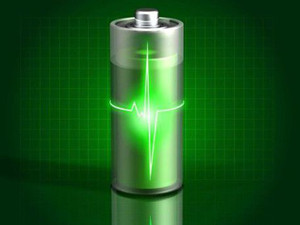Introduction: 18650 Battery Voltage Curve
Oct 24, 2019 Pageview:2036
The 18650 batteries are lithium-ion rechargeable batteries. The scientific name for them is 18650 cells. They have a 3.7V voltage and have capacities between 1800 mAh and 3500 mAh. The average charge time for the 18650 battery is approximately four hours. The 18650 batteries are larger than the AA batteries. They are used widely in the robotics world.
Most 18650 batteries last between 300 and 500 charge cycles. However, the lifespan of these batteries can be extended beyond those numbers if you charge the batteries regularly before they completely discharge. Since the 18650 battery is a LiPo battery, it will degrade over time, which unfortunately is an irreversible process. With proper usage, you can get over a year or two of life from your battery.
When choosing your 18650, is it recommended that you get a battery that is slightly over your device's minimum discharge requirements.
The 18650 batteries are used widely in flashlights, electronics, laptops, vaping devices, and most recently electric vehicles use the 18650 batteries. The Tesla cars use 7180 of the 18650 batteries. Laptops and other electronic devices use more than one 18650 batteries, the ones used in these devices are the protected ones containing a protection circuit in them. The ones that were used in vaping devices before were the unprotected ones, but in recent events of explosions that happened to those devices, companies now use only the protected ones in those vaping devices.
The 18650 are LiPo batteries. That means if you are familiar with the Lithium battery technology, you can change and replace these batteries yourself. However, you need to be extremely careful though as any misstep and you risk causing a fire or even an explosion.
How important is voltage to 18650 battery?
The cycle in a 18650 battery is calculated when a battery is charged and discharged. The 18650 batteries are charged up to 4.2V and down to between 2V and 3V, the value depends entirely on the cell's cut-off voltage specification.
Discharging happens the minute you start using your batteries. The 18650 Lithium-ion batteries are voltage-dependent. If you do not know your voltage, do not attempt to charge your battery. Doing so may result in dangerous repercussions.
Do you need to test the voltage of the 18650 battery?
Before using the 18650 battery you need to test the voltage of it. That way you can determine whether the battery can be used for the purpose you want or not. Beware that using the battery without testing the voltage may result in catastrophic results.
To test your batteries you will need the following equipment:
· Voltmeter
· RC charger
· 4 trays
Beware that the 18650 batteries are LiPo type batteries, so when charging or discharging you have to choose the LiPo option in all the devices.
When using used cells, testing their voltage is a must, if any battery shows a value that is below the 2.5V then you need to dispose of this battery immediately as it is not safe for usage. When charging a used cell it is safer to set the charging late low (e.g. 0.3 amps) and the voltage to 3.7V and then start charging.
How do you protect 18650 voltage?
Some 18650 batteries that are cheap come without a protection circuit. Protecting the 18650 is extremely important as problems like over-discharging or overcharging can be dangerous to both the device and the person using that device. Here we will teach you how to make a protection circuit that is capable of protecting your 18650 battery.
You will first need to get some tools and parts to start creating the circuit.
The tools and parts needed are:
· A Voltmeter
· Soldering iron
· Wire cutter
· Some wires
· Any old phone battery
Salvage the circuit
· Grab your cutting tool, and then open up the old phone battery. Be extremely careful to not short the circuit it may cause an explosion.
· Now, start cutting the input wires of the circuit.
· Check out which input is negative and which is positive.
· There will be three output pins, one is the signal pin, and the other two are the positive and the negative outputs.
· After succeeding in salvaging the circuit go and solder it to the 18650 battery.
Soldering the circuit to the 18650 battery
· Prepare four pieces of copper wires
· Heat up the soldering iron
· Solder together and the 18650 battery using the copper wires.
· Pay extreme attention to the polarity, and try your best to not short the battery, it may cause a fire.
Now, it is time to test your circuit.
Testing the protection circuit
· Grab the voltmeter.
· Test the output voltage.
If it is working OK, then congratulations you have created a protection circuit to your 18650 battery and can start working with it.
- Prev Article: Graphene Battery vs Lithium Ion: Which Offers Superior Performance?
- Next Article: What is C in LiPo Battery?
Leave Message
Hottest Categories
-
Hottest Industry News
-
Latest Industry News











